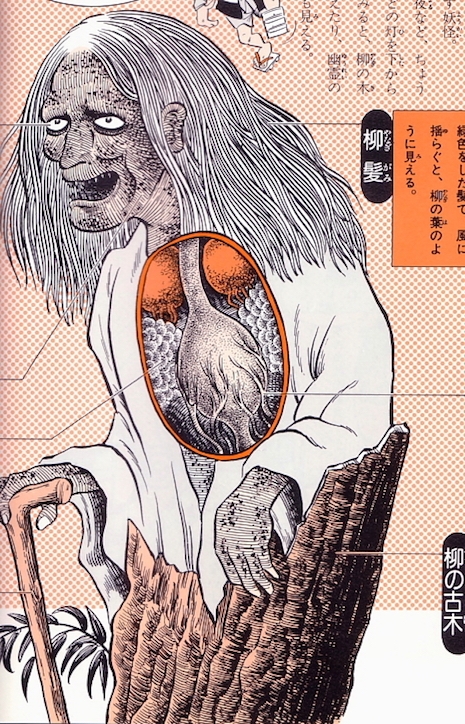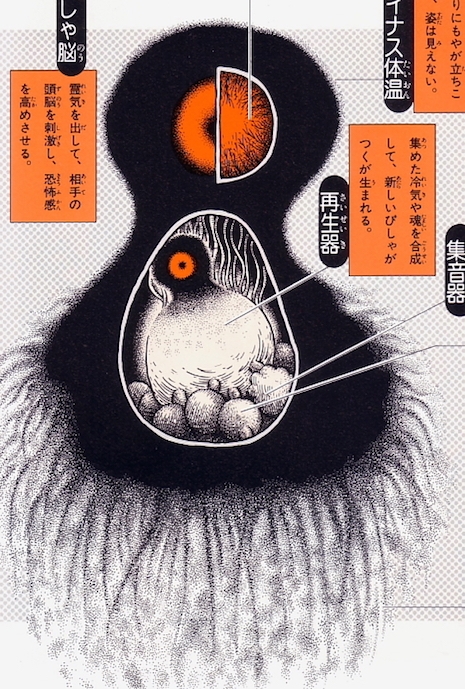
“Doro-ta-bō” - the “muddy rice field man.” Anatomical features include a gelatinous lower body that merges into the earth, a ‘mud sac’ that draws nourishment from the soil, lungs that allow the creature to breathe when buried.
In 1960, the great manga artist Shigeru Mizuki took on the task of illustrating anatomical versions of over 80 monstrous members of the yōkai—a group of monsters who, according to Japanese folklore, inhabit the countryside of Japan.

“Makura-gaeshi” - the “pillow mover” who can only be seen by children. Anatomical features include an organ for storing souls stolen from children.

“Yanagi-baba” - the “willow witch” is the spirit of a 1,000-year-old willow tree. Anatomical features a stomach that supplies nourishment directly to the tree roots.

“Bisha-ga-tsuku”—a soul-stealing creature. Anatomical features include feelers that inhale human souls and cold air, a sac for storing the sounds of beating human hearts, and a brain that emits a fear-inducing aura.
Mizuki’s monsters first appeared in a Japanese magazine as a part of a series of manga comics called GeGeGe no Kitarō but was deemed “too scary” for kids. Adapted from traditional Kamishibai tales (the art of storytelling using paper scrolls) from the early 1930s, Mizuki’s stories that center around the adventures of a ghost-boy named Kitarō, have gone on to become the subjects of long-running television series, films and of course a video game.
Long considered a master when it comes to yōkai-style storytelling as well as pioneer of manga animation, the prolific and much loved Mizuki passed away last year at the age of 93, leaving behind a massive body of influential work that is well worth exploring. Especially if you dig the strange anatomical illustrations in this post which can be found in the 2004 book, Yōkai Daizukai.
More after the jump, including Mizuki’s black and white cartoon, ‘GeGeGe no Kitarō’ from the early 1960s…





